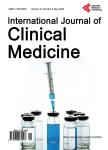Patterns and Changes in the Treatment of Patients with Type II Diabetes Mellitus in Egypt: The DISCOVER Program
Patterns and Changes in the Treatment of Patients with Type II Diabetes Mellitus in Egypt: The DISCOVER Program作者机构:Endocrinology Department Ain Shams University Cairo Egypt Internal Medicine Department Cairo University Giza Egypt Internal Medicine Department Alexandria University Alexandria Egypt Endocrinology Department National Institute of Diabetes & Endocrinology Cairo Egypt Internal Medicine Department Diabetes Unit Cairo University Giza Egypt Internal Medicine Department Ain Shams University Cairo Egypt
出 版 物:《International Journal of Clinical Medicine》 (临床医学国际期刊(英文))
年 卷 期:2020年第11卷第12期
页 面:731-742页
学科分类:1002[医学-临床医学] 100201[医学-内科学(含:心血管病、血液病、呼吸系病、消化系病、内分泌与代谢病、肾病、风湿病、传染病)] 10[医学]
主 题:Diabetes Mellitus Glucose Control Metformin Patient-Reported Outcomes Egypt HbA1c Medication
摘 要:The DISCOVER study is a three-year, non-interventional prospective study conducted in 37 countries, including Egypt, to assess the treatment patterns and outcomes in patients with type 2 diabetes mellitus initiating a second-line antidiabetic therapy (add-on or switch). In this report of the Egyptian cohort of DISCOVER, baseline data were collected according to routine clinical practice at 38 study sites, using a standardized electronic case report form, in the period from December-2014 to November-2019. We enrolled 583 patients (mean age: 52.9 ± 9.8 years and median duration since diagnosis: median 36.5, IQR 18.1, 70.4 months). The mean HbA1c value at baseline was 8.6 ± 1.4%, indicating poor glycemic control. The most commonly prescribed first-line medications were metformin or sulfonylurea monotherapy. For second line-therapy, the majority of patients switched to dual therapy with metformin plus sulfonylureas or DPP-4 inhibitors. Fewer patients switched to triple therapy, treatment by four or more medications, or insulin treatment (15, 12, and 35 patients, respectively). The most commonly cited reasons for switching to second-line therapy were lack of efficacy, weight gain, hypoglycemic events, and side effects (549, 54, 25, and 21 patients, respectively). The set treatment target of enrolled patients at the initiation of second-line therapy was an HbA1c level of 6.9%. Follow-up data will assess the outcomes of such changes in the Egyptian population.



